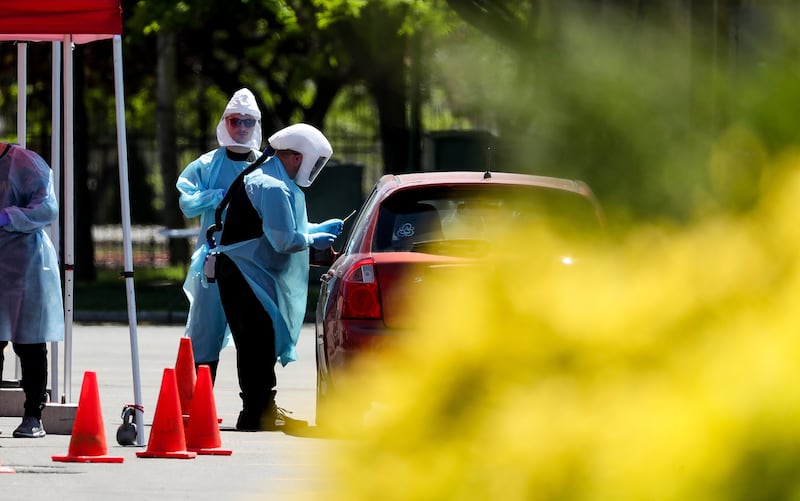SALT LAKE CITY — As it’s swept across the state, the new coronavirus has hit vulnerable communities in Utah disproportionately hard, illuminating health disparities that experts and officials say already existed.
Now, Hispanic and Latino residents account for 2,288 of confirmed cases in the Beehive State — or 37.5% — even as they make up just 14.2% of the population, according to the latest data from the Utah Department of Health.
Just under a month ago, 28% of the state’s cases were Hispanic or Latino.
Meanwhile, Native Hawaiians and Pacific Islanders account for 2.9% of cases while making up only 1.6% of the population.
Those rates are more pronounced in Salt Lake County, where Native Hawaiian and other Pacific Islanders have been hit the hardest, followed by Hispanics and Latinos, according to county data.
“I think you have to look at it from a historical perspective, too, when you look at communities of color. We’re the essential workers, and so we’re some of the front line. And so that’s why you see many members in our community contracting the virus,” said Rep. Angela Romero, D-Salt Lake City.
In an effort to stem the spread in one Salt Lake City neighborhood, Romero and Utah’s five other racial and ethnic minority legislators teamed up with health organizations to organize the first in a series of testings events in underserved communities.
“Sometimes it’s hard to build trust, especially when you’re coming from a disenfranchised community, and maybe you’re a refugee and you don’t trust your government. But when you see someone like (Rep. Sandra Hollins, D-Salt Lake City) or myself, you might feel, ‘OK, maybe this is OK. Maybe I can be safe. Maybe I don’t have to be afraid,’” Romero said.
“We need to make sure that we minimize or eliminate as many barriers to testing as we can, and so I think that’s what the mobile testing sites are about, just taking testing to the communities that probably need it the most,” said Robin Marcus, University of Utah chief wellness officer.
Officials started in the Utah State Fairpark area, where many in surrounding neighborhoods have been affected by the disease, to give people better access to not only testing, but other resources.
“When you look since this began, a lot of the testing has not been in this community, on the west side of this community,” Hollins said.
“And we wanted to ensure that it was a place they trusted,” Romero said.
At Saturday’s event, about 300 people made appointments for testing, reaching the capacity. A steady stream of cars pulled through the parking lot, where two tents were set up, along with the U. Health Wellness Bus. Romero said anyone was welcome to make an appointment, and residents from as far away as Payson signed up.
For those who get tested and may not have internet access and other challenges, Romero said a partnership between the county and city will offer them additional help.
Hollins said lifestyle factors of those in the city’s vulnerable communities — including large, multigenerational households — make them especially vulnerable to the disease. Conditions including asthma, diabetes and high blood pressure create added risk factors.
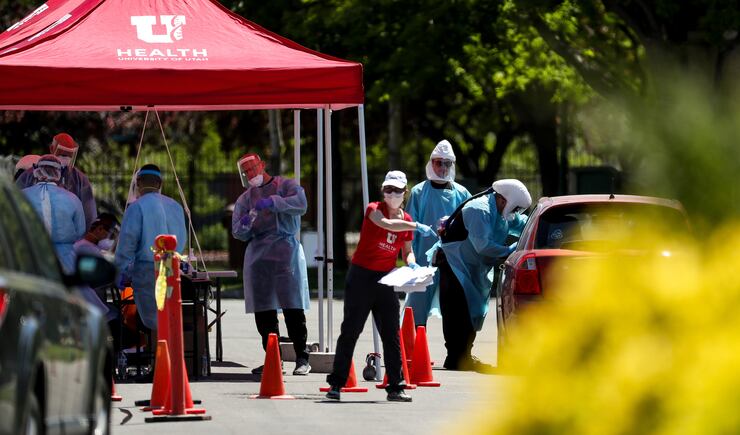
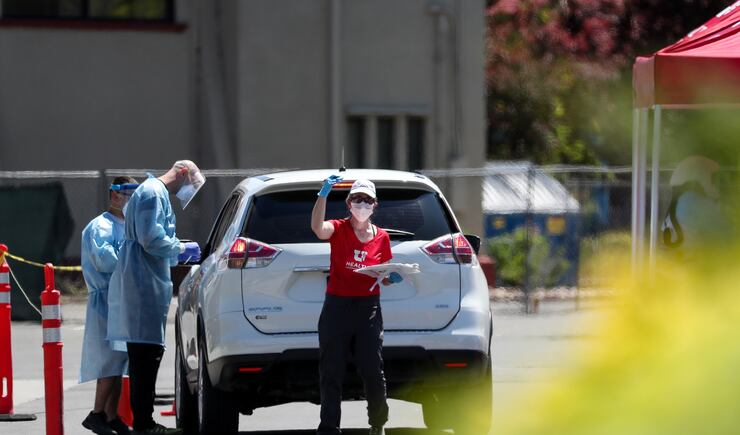
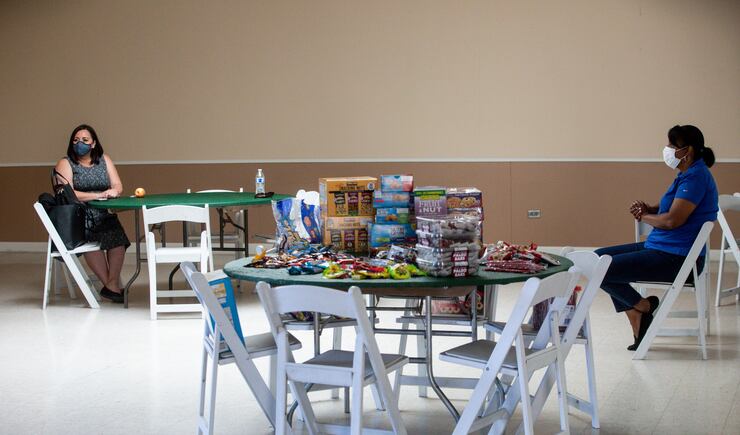
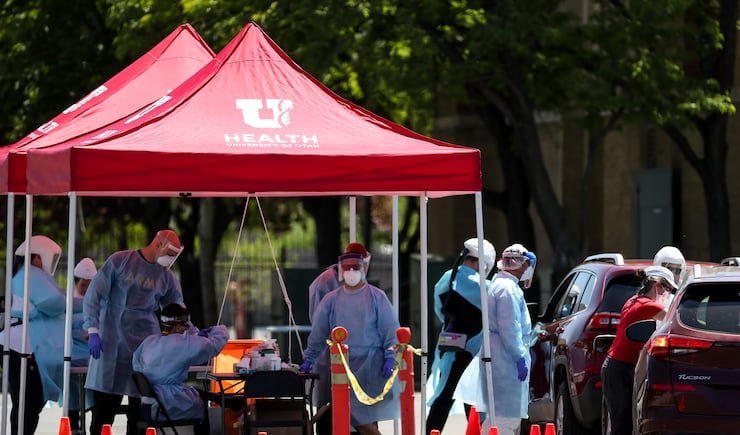
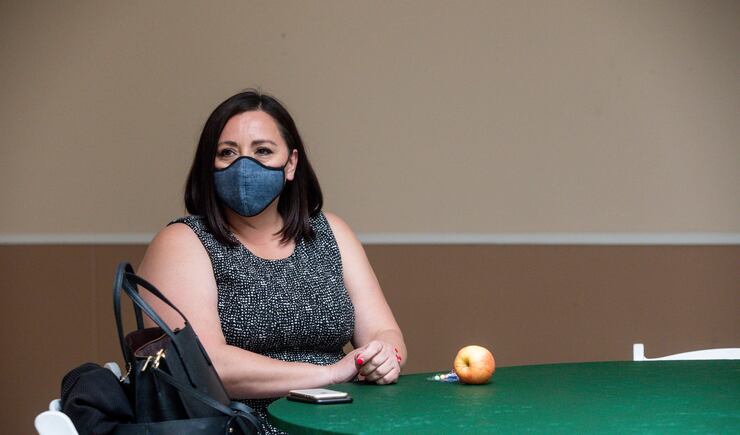
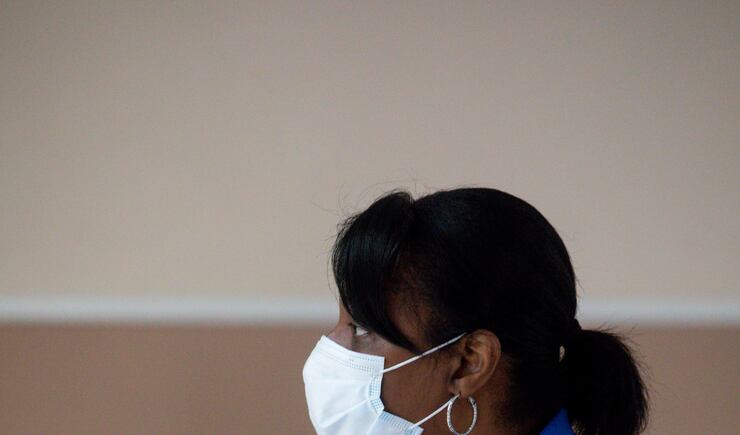
When asked if the community is doing enough for those most at risk, Romero said, “In a pandemic, everyone’s just doing the best they can.”
“This virus is unprecedented, and it hit us pretty hard,” Hollins said. “And I think as people now trying to, instead of trying to place blame, it’s just like, ‘OK, let’s just come together and figure out what we can do to provide services to the people who are being affected by this the greatest.”
The testing event was a joint effort of Sen. Luz Escamilla, D-Salt Lake City, Sen. Jani Iwamoto, D-Holladay, Rep. Karen Kwan, D-Murray, Rep. Mark Wheatley, D-Murray, Romero and Hollins; the Utah Department of Health Office of Health Disparities; U. Health; Salt Lake County; Salt Lake City; and the Utah State Fair Park.
“Hopefully, with the data that we collect from this, we hope to be able to use this as a model In the future when we’re dealing with disparities because again the testing’s just one piece of this. We really want to look at ethnic and racial disparities as a whole, and how do we help people be at a point to where they know they have a support system and be able to get on their feet,” Romero said.
Utah data
Meanwhile on Saturday, five more people have died with COVID-19 in Utah, bringing the state’s death toll to 66.
Four of the latest fatalities were Salt Lake County residents — one man and three women all older than 60. Three of the deaths were associated with a long-term care facility, according to the Utah Department of Health.
The fifth death was a San Juan County man younger than 60.
Additional information about the fatalities, including whether they had underlying health conditions, was not immediately released.
In Utah, 184 additional people have tested positive for the disease since Friday, bringing the state’s total to 6,103. About 4,600 more people were tested, bringing the total to 143,294.
The Utah Department of Health has also released comprehensive data on current hospitalizations, risk factors and methods of exposure.
According to the data, 92 patients with COVID-19 are currently being treated in Utah hospitals, while 124 hospital patients are under investigation for the virus. In Utah, 488 people have required hospitalization at some point during the pandemic — 162 of them in the intensive care unit and 73 requiring ventilators.
There may, however, be a reporting lag in cases entering the hospital within the last five days, the health department says.
The data shows there was a peak in cases on April 23, with 18 new hospitalizations. Daily new hospitalizations since March 20 have varied day by day, with, for example, just five on March 28 and 11 the next day.
About 1,500 of the confirmed cases had known underlying conditions — the highest number of whom were former smokers. About 61% of the cases were transferred between known contact, meaning the cases knew who they likely contracted the disease from.
Of cases spread through known contact, just under 60% were passed within households; 24.9% of cases were contracted through social interactions; 10.8% were unspecified; and 4.9% occurred in the workplace.
Meanwhile, 16.1% of cases were contracted through unknown contact, 3.5% through travel, 2% in health care settings, and 17.1% were contracted through an unknown source.
The breakdown of Utah COVID-19 cases, hospitalizations and deaths by health district:
- Salt Lake County, 3,206; 286 hospitalized; 43 deaths
- Utah County, 1,318; 74 hospitalized; 11 deaths
- Summit County, 385; 33 hospitalized; 0 deaths
- Davis County, 327; 27 hospitalized; 2 deaths
- Weber-Morgan, 188; 23 hospitalized; 2 deaths
- Wasatch County, 176; 7 hospitalized; 1 death
- Southwest Utah, 155; 13 hospitalized; 3 deaths
- San Juan County, 145; 15 hospitalized; 3 deaths
- Tooele County, 76; 6 hospitalized; 0 deaths
- Bear River, 71; 11 hospitalized; 1 death
- Central Utah, 27; 2 hospitalized; 0 deaths
- Southeast Utah, 13; 0 hospitalized; 0 deaths
- TriCounty (Uinta Basin), 16; 1 hospitalized; 0 deaths

